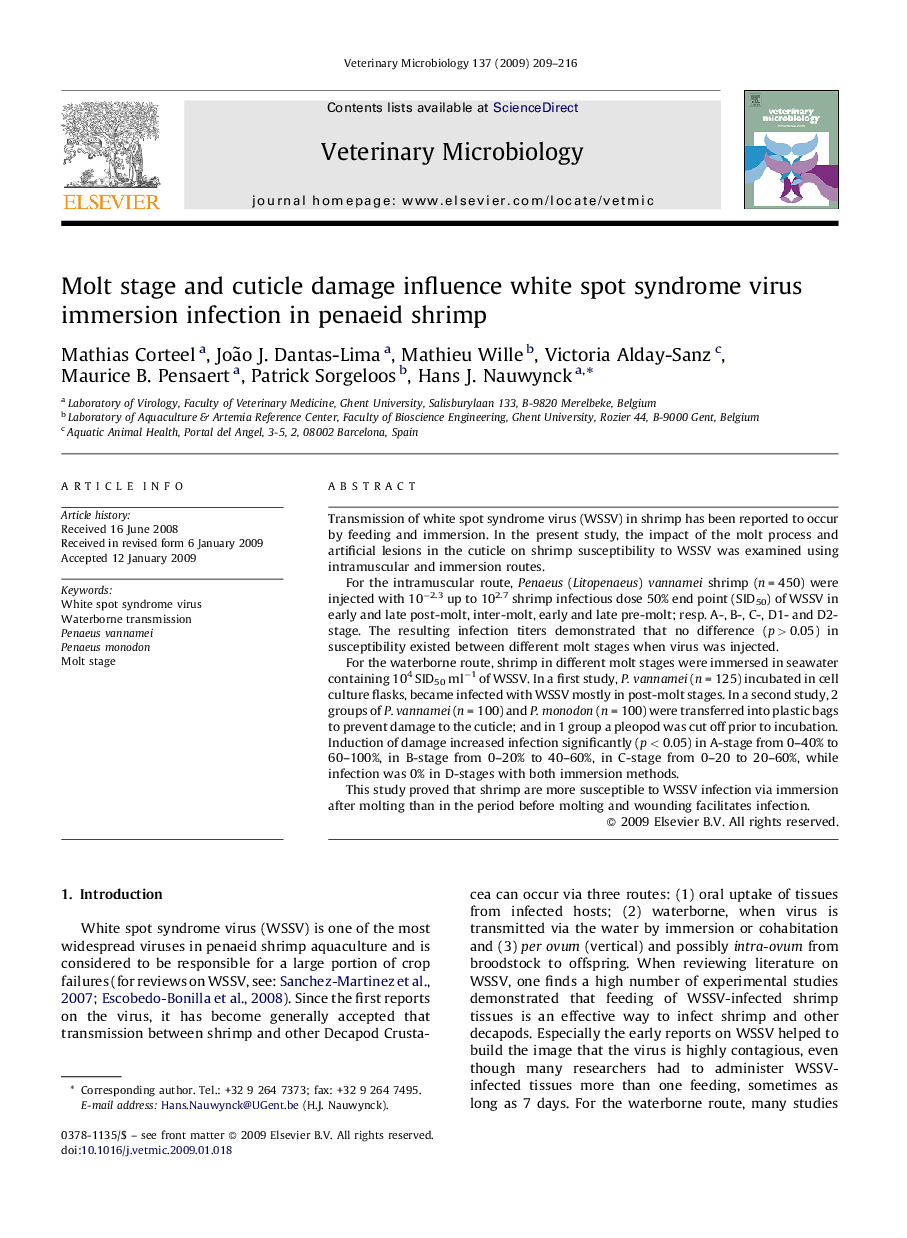| Article ID | Journal | Published Year | Pages | File Type |
|---|---|---|---|---|
| 2468281 | Veterinary Microbiology | 2009 | 8 Pages |
Transmission of white spot syndrome virus (WSSV) in shrimp has been reported to occur by feeding and immersion. In the present study, the impact of the molt process and artificial lesions in the cuticle on shrimp susceptibility to WSSV was examined using intramuscular and immersion routes.For the intramuscular route, Penaeus (Litopenaeus) vannamei shrimp (n = 450) were injected with 10−2.3 up to 102.7 shrimp infectious dose 50% end point (SID50) of WSSV in early and late post-molt, inter-molt, early and late pre-molt; resp. A-, B-, C-, D1- and D2-stage. The resulting infection titers demonstrated that no difference (p > 0.05) in susceptibility existed between different molt stages when virus was injected.For the waterborne route, shrimp in different molt stages were immersed in seawater containing 104 SID50 ml−1 of WSSV. In a first study, P. vannamei (n = 125) incubated in cell culture flasks, became infected with WSSV mostly in post-molt stages. In a second study, 2 groups of P. vannamei (n = 100) and P. monodon (n = 100) were transferred into plastic bags to prevent damage to the cuticle; and in 1 group a pleopod was cut off prior to incubation. Induction of damage increased infection significantly (p < 0.05) in A-stage from 0–40% to 60–100%, in B-stage from 0–20% to 40–60%, in C-stage from 0–20 to 20–60%, while infection was 0% in D-stages with both immersion methods.This study proved that shrimp are more susceptible to WSSV infection via immersion after molting than in the period before molting and wounding facilitates infection.
